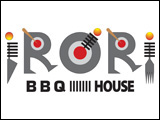Telestroke, a program that provides specialized emergency care to stroke patients in rural communities, has expanded to Southern Health-Santé Sud. Telestroke is now available at the following three regional centres: Bethesda Regional Health Centre, Boundary Trails Health Centre and Portage District General Hospital.
“Every minute counts when someone is having a stroke,” said Health, Seniors and Active Living Minister Cameron Friesen. “This program expansion brings experts to the patients in this region for faster evaluation, ensuring they have access to high-quality care in a timely way so treatment can begin as soon as possible.”
Patients exhibiting stroke symptoms and transported by ambulance to a regional health centre will receive advanced emergency stroke services and treatment options. Telestroke enables local emergency physicians to work remotely with stroke neurologists and radiologists 24 hours a day. The stroke neurologist and radiologist on call can receive CT scan results digitally. These specialists work together with the local team to determine if a patient can be treated with a clot-bursting drug, which can help patients make a partial or complete recovery if given within 4.5 hours after the first symptoms of stroke appear.
“Telestroke facilitates new connections between rural patients, local physicians and stroke specialists in other parts of the province,” said Jane Curtis, Chief Executive Officer of Southern Health-Santé Sud. “This innovative technology adds capacity to the region and complements our current standards of care. Telestroke also provides patients that present with stroke symptoms the expert care they need for reducing the long-term risks associated with strokes.”
Anyone suspecting that they are having a stroke or witnessing someone else having a stroke should call 911 immediately. This will mobilize the fastest response to ensure that emergency personnel can start assessing the patient. They will also make sure one of the three regional health centres is ready when the patient arrives.
“Stroke is the third leading cause of death in Canada and a leading cause of disability. Having Telestroke available in Southern Health-Santé Sud will help save lives,” said Allison Kesler, Chief Executive Officer of the Heart and Stroke Foundation of Manitoba and Saskatchewan. “Helping people to understand the urgency of taking rapid action for early recognition and management of strokes, as well as putting into place improved systems for treatment and support, will decrease rates of disability and death from a stroke.”
The Telestroke program is a collaborative partnership between the Manitoba government, the regional health authorities, Shared Health/Soins communs, and the Heart and Stroke Foundation of Manitoba.
The Heart and Stroke Foundation has a quick way to remember the signs of a stroke and the importance of immediate action using the word FAST, which stands for:
- Face: Is it drooping?
- Arms: Can both be raised?
- Speech: Is it slurred or jumbled?
- Time: To call 911 right away
More information on the Heart and Stroke Foundation and FAST is available at heartandstroke.ca. Learn more about Heart & Stroke Best Practice Recommendations for Telestroke at strokebestpractices.ca.



